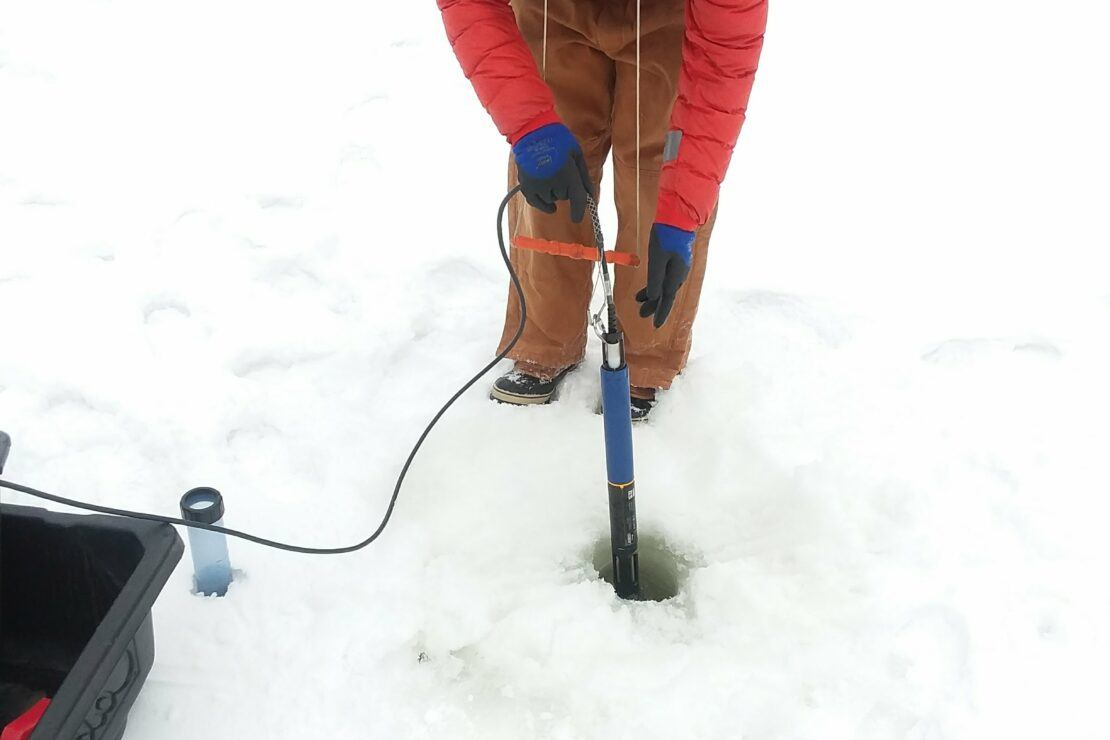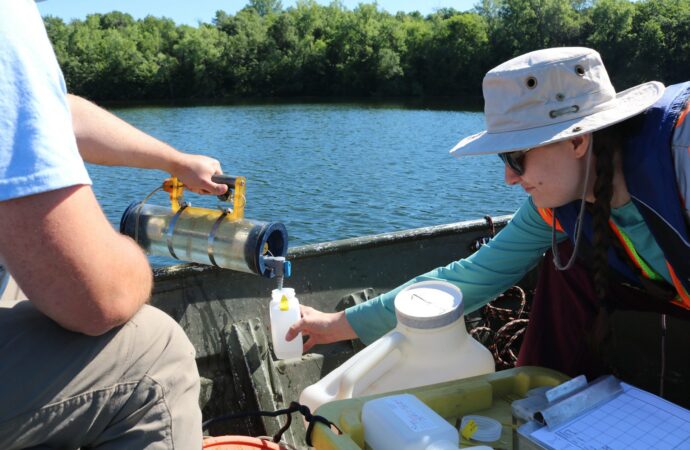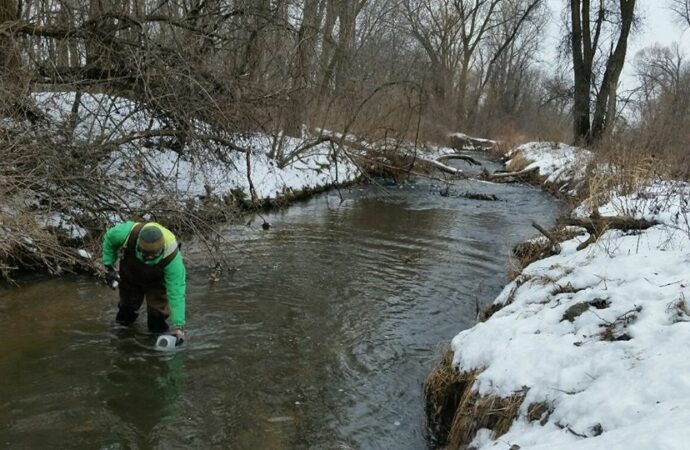Water Quality Monitoring
Our lake water quality monitoring program, in partnership with Ramsey County, collects samples on District lakes every two to three weeks from beginning of June through the end of September. This is considered the growing season when the lake is the most productive. We measure lake water clarity, and take readings of conductivity, temperature, pH and dissolved oxygen every meter of depth in the deepest part of the lake. In addition, we collect water samples that are analyzed for chloride, phosphorus and chlorophyll-a. The District has established goals for annual average Secchi reading, chlorophyll-a and phosphorus in our managed lakes.


Our lake water quality monitoring program, in partnership with Ramsey County, collects samples on District lakes every two to three weeks from beginning of June through the end of September. This is considered the growing season when the lake is the most productive. We measure lake water clarity, and take readings of conductivity, temperature, pH and dissolved oxygen every meter of depth in the deepest part of the lake. In addition, we collect water samples that are analyzed for chloride, phosphorus and chlorophyll-a. The District has established goals for annual average Secchi reading, chlorophyll-a and phosphorus in our managed lakes.

Interpreting the Water Quality Monitoring Charts
Chorophyll, Phosphorus, and Secchi ChartsThese charts are intended to provide a simple visual comparison between water quality indicators of metro area lakes. The background colors and grades show where the average annual measurements are in relation to other area lakes, eg “A”, light blue, means the readings are in the top 10% recorded. Grades of A or B are generally good water quality, and those with D of F are poor water quality indicators. Water quality information for lakes can be found on their individual page under our waters map. For more detailed water quality data, visit the MPCA link found in our site’s data section.

A guide to water quality indicators and what they mean
Chlorophyll-A
Chlorophyll-a is the primary photosynthetic chemical found in algae, and the amount of it found in the water column is a fairly good measure of the amount of free floating algae in the water. This free algae is a major contributor to the “pea soup” appearance of some lake water. Chlorophyll-a in the water column also reduces the amount of light available to rooted aquatic plants.
Phosphorus
Phosphorus is a chemical element that is essential for all living cells. However, when there is an overly large amount of phosphorus in the water, algae can respond with an accelerated growth pattern called a ‘bloom’. After a large bloom caused by phosphorus, the algae dies and as it decomposes it consumes oxygen, depleting dissolved oxygen in the water which can be harmful for aquatic life.
Chloride
Sodium chloride, which typically finds its way to our waters via the application of road and sidewalk salt, is toxic to some aquatic life.
Water Clarity and Secchi Disk Measurement
A Secchi disc is a device used to measure lake water clarity. Secchi disc readings are taken with a small black and white plastic disc. The disc is lowered over the shaded side of the boat until it just disappears from sight, and then raised until it is just visible. The average of the two depths is the Secchi depth.
What can I do to improve the clarity of water in my lake?
Anything you can do to prevent soil or nutrients from reaching a water body will help improve water quality. This includes creating a shore buffer with native and water friendly plants, making sure your shoreline is not eroded, preventing leaves, grass clippings and fertilizer from reaching the lake, reducing the amount of hard surfaces in your yard, and featuring deep-rooted perennial plants in your landscaping. You can find more details in the Learn section of our site.